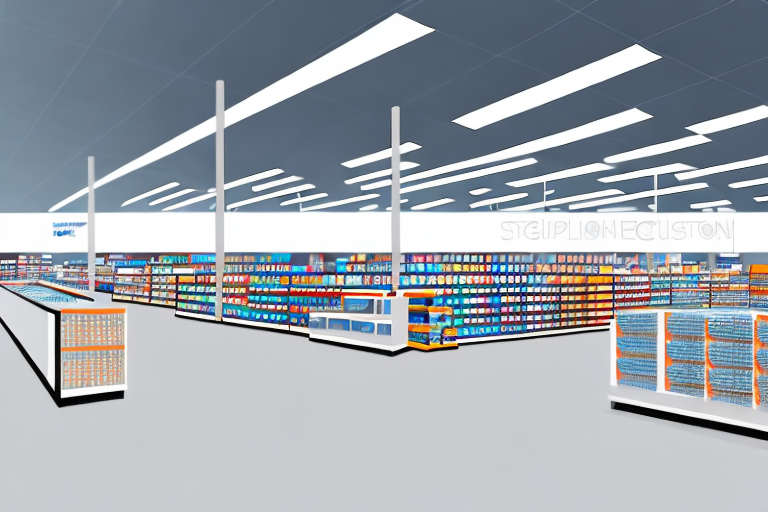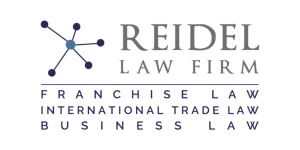In the ever-evolving world of retail, there are tales of both triumph and tragedy. Circuit City, once a dominant force in the electronics retail industry, experienced a fall from grace that left many scratching their heads. This article aims to delve into the rise and dominance of Circuit City, the factors that led to its downfall, and the lasting impact it had on the retail landscape. Join us as we embark on a comprehensive journey through the history and demise of this electronics giant.
The Rise and Dominance of Circuit City in the Electronics Retail Industry
During the late 20th century, Circuit City emerged as a powerhouse in the electronics retail industry. Founded in 1949, Circuit City was created in Richmond, Virginia, originally as a small television store. As part of its early expansion, the company acquired and rebranded the Dixie Hi-Fi chain, marking its entry into the music hi-fi business before significant growth. Through strategic acquisitions and aggressive expansion efforts, Circuit City grew into a huge retail chain, becoming a household name known for its vast selection, knowledgeable salespeople, and attractive pricing. The company’s flagship “superstore” concept introduced a new design for store layouts, featuring showrooms that improved customer experience by allowing customers to see, order, and carry out products easily. This innovation solidified its position as the go-to destination for electronics enthusiasts.
One key aspect that set Circuit City apart was its introduction of the “Circuit City Model” – a unique commission-based compensation system for salespeople. This innovative approach provided incentives for each salesperson to go above and beyond in delivering exceptional customer experiences, while also driving sales and fostering a highly competitive work environment.
The Factors That Led to Circuit City’s Downfall
However, despite its initial success, Circuit City faced several challenges that ultimately contributed to its downfall. One of the primary factors was the emergence of fierce competition, both from traditional retailers and the burgeoning wave of online sellers. As consumers became more comfortable with making purchases online, Circuit City struggled to adapt its business model to the rapidly shifting landscape. Discontinuing the sale of appliances was a strategic mistake that allowed competitors like Best Buy to gain market share and further weakened Circuit City’s position.
Add to this the economic recession of the late 2000s, and Circuit City found itself in a perfect storm. With dwindling consumer spending and a decline in demand for electronics, the company faced an uphill battle to maintain profitability. Furthermore, poor financial management, an inability to manage costs effectively, and ill-advised investments only exacerbated the situation, leading to the loss of money and pushing Circuit City further towards the edge.
The Impact of Online Competition on Circuit City’s Business Model
Perhaps one of the most significant blows to Circuit City’s success was the rise of online retailers. As the internet age dawned, consumers began to favor the convenience and competitive pricing offered by e-commerce giants like Amazon. This seismic shift in consumer behavior, combined with Circuit City’s failure to establish a strong online presence, left the company vulnerable to its more agile competitors.
While Circuit City did make attempts to bolster its e-commerce platform, these efforts were too little, too late. The company’s failure to adapt to the rapidly evolving digital landscape played a pivotal role in its decline, as consumers increasingly turned their backs on its brick-and-mortar stores in favor of the convenience and ease of online shopping. Additionally, reliance on outdated point-of-sale and inventory line management systems further hindered operational efficiency, making it difficult for Circuit City to keep pace with competitors who streamlined their logistics and product information.
The Missteps and Strategic Errors That Contributed to Circuit City’s Demise
Another factor that cannot be overlooked in Circuit City’s downfall was a series of strategic blunders and missteps. In an attempt to cut costs and improve profitability, the company made the ill-advised decision to lay off its most experienced and highly-paid sales staff, who were replaced with less experienced employees. This move not only resulted in a loss of valuable talent and customer loyalty but also compromised the company’s commitment to delivering exceptional customer service, which had been one of its defining traits.
Additionally, Circuit City missed out on major deals and partnerships that could have strengthened its market position and helped it remain a big deal in the electronics industry.
Furthermore, Circuit City’s foray into the used car business, through the acquisition of Carmax, proved to be a significant diversion from its core focus. This diversification strategy stretched the company’s resources and distracted management from its primary objective: staying ahead in the highly competitive electronics market. These strategic errors, combined with a lack of strong leadership, proved to be detrimental to Circuit City’s long-term prospects.
How Circuit City Failed to Adapt to Changing Consumer Preferences
Innovation is often seen as a key driver of success in any industry. Unfortunately, Circuit City’s inability to adapt to changing consumer preferences played a critical role in its downfall. As the demand for physical media, such as CDs and DVDs, began to decline in the digital age, Circuit City failed to capitalize on emerging markets, like streaming services and digital downloads. The company also missed opportunities to form strategic partnerships with leading technology brands such as Apple Computer, which could have helped it stay relevant and attract tech-savvy customers through in-store promotions and exclusive product offerings. This failure to anticipate and respond to shifting consumer preferences ultimately sealed the company’s fate.
Moreover, while other electronics retailers were quick to embrace new trends, like the growing demand for smartphones and tablets, Circuit City remained stuck in its traditional ways. Lacking the foresight to invest in these emerging technologies, the company missed out on significant revenue opportunities and fell behind its competitors. Additionally, Circuit City did not implement competitive price strategies, which were crucial for success in the electronics retail sector, further impacting consumer perception and its ability to compete effectively.
The Decline of Physical Retail Stores and Circuit City’s Inability to Keep Up
A significant challenge faced by Circuit City was the decline of physical retail stores. As people became more accustomed to the convenience of online shopping, foot traffic in traditional stores dwindled. While competitors like Best Buy managed to weather this storm by embracing e-commerce and offering unique in-store experiences, Circuit City struggled to adapt.
Attempts to revamp its store layouts and improve customer experience included efforts to bring in new inventory to attract customers, but these initiatives were often too little, too late. The company’s failure to provide a compelling reason for consumers to visit its physical stores, in combination with its inability to effectively integrate its online and offline channels, resulted in a steady decline in sales. Ultimately, Circuit City’s inability to adapt led to its exit from the retail market.
Circuit City’s Financial Troubles: From Profitability to Bankruptcy
As Circuit City’s operational challenges mounted, so too did its financial troubles. The company’s profits began to erode, leaving it increasingly reliant on credit and borrowing to maintain operations. Mounting debt and declining sales led to a vicious cycle, further exacerbating Circuit City’s financial woes.
In 2008, Circuit City filed for Chapter 11 bankruptcy protection, and was ultimately declared bankrupt as its financial troubles peaked. In March 2009, key announcements and actions were taken regarding the company’s fate, marking a significant moment in its downfall. As part of the bankruptcy proceedings, trading of Circuit City’s stock was halted on the New York Stock Exchange. Despite efforts to restructure and regain profitability, the company ultimately failed to overcome the challenges it faced, leaving behind a legacy of financial ruin and shattered dreams.
The Role of Poor Management and Leadership in Circuit City’s Collapse
While external factors undoubtedly played a significant role in Circuit City’s decline, the company’s downfall cannot be divorced from the shortcomings of its management and leadership. In the face of mounting challenges, Circuit City’s leaders failed to make bold strategic decisions or adapt its business model to the changing landscape. The lack of foresight, combined with poor financial management, ultimately sealed Circuit City’s fate.
Alan Wurtzel, a former CEO of Circuit City, later reflected on his leadership era, emphasizing the importance of humility and the need for business leaders to recognize and learn from their mistakes. His perspective highlights how critical self-awareness and adaptability are in effective business management.
In times of crisis, effective leadership is crucial in guiding a company through turbulent waters. Unfortunately, Circuit City’s leaders were unable to rise to the occasion, leaving the company adrift amidst a sea of challenges it was ill-equipped to navigate.
The Effect of Economic Recession on Circuit City’s Business Operations
The economic recession that gripped the world in the late 2000s had a devastating impact on Circuit City’s business operations. As consumers tightened their belts and reduced discretionary spending, demand for electronics plummeted, leaving Circuit City struggling to maintain profitability.
With consumers opting for cheaper alternatives or postponing purchases altogether, Circuit City faced a significant decline in revenue. As the recession deepened, the company’s situation went south, with its fortunes taking a sharp downturn. This decline, combined with the company’s substantial fixed costs and mounting debt, pushed Circuit City to the brink of collapse. The economic recession proved to be the final nail in the coffin for an already fragile company.
Real Estate Holdings and Asset Management: The Fate of Circuit City’s Properties
At its peak, Circuit City operated more than 1,500 retail stores across the United States, securing prime real estate in bustling shopping centers and high-traffic locations. This expansive footprint was once a symbol of the company’s dominance in the electronics market, allowing Circuit City to reach millions of customers and compete head-to-head with other retailers like Best Buy. However, as the retail landscape shifted and online retailers began gaining traction, these once-valuable assets quickly became a source of mounting costs and operational headaches.
As consumer preferences moved online and foot traffic in physical stores declined, Circuit City found itself unable to generate the sales needed to support its vast network of locations. The company announced plans to cut costs by closing underperforming stores, hoping to stabilize its finances and adapt to the changing market. Despite these efforts, Circuit City was unable to keep pace with the rapid rise of e-commerce and the changing expectations of consumers, who increasingly valued convenience and competitive pricing over in-person service.
The financial strain became evident as Circuit City struggled to pay its suppliers, including major companies like Hewlett Packard, Samsung, and Sony. With mounting debts and declining revenue, Circuit City filed for bankruptcy in 2008, marking the beginning of the end for the electronics giant. The company’s remaining stores were liquidated, and its prime real estate holdings were sold off to other retailers or left vacant, further impacting the communities that had once relied on Circuit City for jobs and economic activity.
The Associated Press and other outlets reported on the fallout, noting that Circuit City’s management and executives faced criticism for their handling of the crisis. Decisions to replace experienced sales staff with lower-paid employees in an effort to cut costs backfired, as customers noticed a decline in service and expertise. Meanwhile, the company’s inability to effectively manage its real estate portfolio—failing to secure the best locations or adapt to the new realities of retail—left it unable to compete with more agile online retailers.
After bankruptcy, the Circuit City brand and intellectual property were sold to various companies, with Systemax operating the CircuitCity.com website for a time. However, the physical retail stores never reopened, and the brand faded from the market, serving as a cautionary tale for other businesses. The story of Circuit City’s real estate holdings underscores the importance of asset management, innovation, and customer service in a rapidly evolving retail environment. For today’s retailers, the lesson is clear: adapt to changing consumer behaviors, manage costs wisely, and never underestimate the disruptive power of new technologies and business models.
Lessons Learned: What Other Companies Can Learn from the Fall of Circuit City
The fall of Circuit City serves as a cautionary tale for businesses in any industry. It highlights the importance of staying ahead of evolving consumer preferences, embracing new technologies, and adapting business models to meet the changing needs of the market.
Companies must recognize the need for strategic innovation and a willingness to take risks. Burying one’s head in the sand or sticking to outdated practices will only lead to obsolescence. By fostering a culture of agility and a willingness to adapt, companies can position themselves for long-term success in a rapidly evolving business landscape.
Analyzing the Legacy of Circuit City: What Happened to its Assets and Brand?
Following Circuit City’s demise, the company’s assets and brand found themselves in a state of uncertainty. The liquidation process saw the auctioning off of Circuit City’s inventory, store leases, and other tangible assets.
As for the Circuit City brand itself, attempts were made to revive it in the years following its bankruptcy in various forms, including online retail and other business models. Despite these efforts, what happened to Circuit City serves as a cautionary tale, as the once-famous name failed to regain traction in the highly competitive electronics market. Today, Circuit City remains a relic of the past, serving as a reminder of the ever-changing nature of the retail industry and the perils faced by even the most established companies.
Exploring the Impact of Circuit City’s Closure on Employees and Communities
Circuit City’s closure had far-reaching consequences, particularly for its employees and the communities that relied on its presence. When Circuit City closed, it left a significant void in the retail landscape for both employees and communities. As the company shuttered its stores, thousands of employees found themselves without jobs, facing the daunting task of navigating an uncertain job market.
Furthermore, the closure of Circuit City stores had ripple effects on the surrounding communities. Once bustling shopping centers and retail corridors were left with empty storefronts, leading to a decline in foot traffic and a negative impact on local economies. This cascading effect served as a stark reminder of the wide-reaching consequences that the collapse of a retail giant can have on both individuals and communities.
How Competitors like Best Buy Thrived While Circuit City Failed
The rise of e-commerce and the decline of physical retail stores affected many companies in the electronics retail industry. However, some competitors managed to navigate these tumultuous times successfully, while Circuit City floundered.
Best Buy, in particular, positioned itself as a beacon of resilience and adaptability. The company recognized the importance of embracing online retail, leveraging technology to enhance the in-store experience, and providing exceptional customer service. By investing in these areas, Best Buy not only survived but thrived, cementing its position as a leader in the electronics retail sector.
Wal-Mart also played a significant role in shaping the competitive landscape, using aggressive promotion strategies and securing prime real estate locations to outperform Circuit City in the electronics retail market. Wal-Mart’s ability to adapt quickly to market changes and offer competitive pricing further contributed to its dominance over traditional electronics retailers.
A Post-Mortem Analysis: Examining the Final Days of Circuit City
As we reflect on the final days of Circuit City, it becomes apparent that a combination of factors contributed to its ultimate demise. From the failure to adapt to changing consumer preferences and the rise of online competition to strategic missteps, poor financial management, and a failure of leadership, Circuit City’s fall shines a light on the perils faced by once-mighty retail giants.
However, amidst the tragedy lies an important lesson. Companies must be willing to embrace change, continuously innovate, and critically evaluate their own strategies to remain relevant in an ever-evolving market. The story of Circuit City serves as a stark reminder that complacency and a refusal to adapt can have dire consequences, no matter how successful a company may be.







